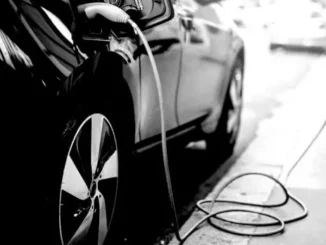
Key Points
-
Research suggests the UK needs significant grid upgrades to avoid blackouts like Spain’s in April 2025, driven by renewable energy integration.
-
It seems likely that investments in transmission, storage, and resilience are crucial, with plans like £35 billion from 2026-2031.
-
The evidence leans toward enhancing grid stability, prioritizing clean energy connections, and addressing renewable variability.
Background
Planned Upgrades
Context of the Spain Blackout
With the UK’s target to decarbonize energy generation by 2030 and plans for 86 GW of offshore wind by 2035, the grid must handle increased variability and demand, potentially mirroring Spain’s challenges if not addressed.
Planned Grid Upgrades and Investments
-
National Grid’s £35 Billion Investment (2026-2031): National Grid announced plans to invest £35 billion in the UK transmission network from April 2026 to March 2031, described as the “most significant step forward in the electricity network in a generation” . This will nearly double the energy transport capacity, support industry electrification, create jobs, and attract investment. It includes developing major projects like the 17 Accelerated Strategic Transmission Investment (ASTI) projects and upgrading 3,500 kilometers of overhead lines.
-
Fast-Tracking £4 Billion in Grid Development: Ofgem has accelerated £4 billion ($5.19 billion) of investment to speed up grid development, aiming to meet clean energy targets and reduce financial risk by early procurement . This aligns with government efforts to make regulators focus on economic growth and energy security.
-
Prioritizing Clean Energy Connections: Reforms prioritize grid connections for clean energy projects, unlocking £40 billion annually in mainly private investment. This includes accelerating connections for industries like data centers and eliminating “zombie” projects to reduce queue delays, ensuring projects driving growth are connected swiftly .
-
Beyond 2030: £58 Billion Investment Plan: The ESO published a “Beyond 2030” report proposing a £58 billion investment by 2035 to meet growing and decarbonizing demand, including connecting 21 GW of offshore wind off Scotland’s coast, bringing total offshore wind capacity to 86 GW, compared to 63 GW globally currently .
To avoid Spain-style blackouts, the UK must focus on the following:
-
Enhancing Grid Inertia and Frequency Stability: Like Spain, the UK must ensure sufficient synchronous generation (e.g., nuclear, hydropower, gas) to provide inertia, especially as renewables increase. Deploying grid-forming inverters for renewables can provide synthetic inertia, addressing frequency stability issues seen in Spain .
-
Expanding Battery Storage Capacity: Spain’s limited storage hindered rapid response; the UK, with about 5 GW currently, should scale up to at least 50 GW by 2030, as Europe aims for 200 GW. Batteries can balance supply and demand, mitigating renewable intermittency .
-
Strengthening Interconnections: The UK’s interconnectors, like Viking Link, experienced failures in 2025. Enhancing capacity with Europe (e.g., Norway, France) and improving internal grid meshing can ensure backup power, addressing Spain’s weak interconnection issue (only 3% capacity exchange).
-
Modernizing Aging Infrastructure: Half of Europe’s power lines are over 40 years old, including parts of the UK. Upgrading transmission lines, transformers, and substations is essential to handle renewable loads and digital monitoring, aligning with the EU’s estimated $600 billion annual need by 2030.
-
Improving Cybersecurity and Digital Resilience: While Spain ruled out cyberattacks, Europe’s grids face rising threats. The UK must implement advanced cybersecurity protocols and conduct regular stress tests, given increasing digital controls .
-
Balancing Renewable Growth with Grid Upgrades: Spain’s rapid renewable expansion outpaced grid upgrades. The UK must coordinate renewable deployment with infrastructure investment, ensuring transmission and storage keep pace, as warned by experts like Professor John Underhill .
Implementation Considerations
|
Aspect
|
Spain’s Challenges (April 2025)
|
UK’s Planned Responses
|
|---|---|---|
|
Renewable Penetration
|
80% wind/solar, low inertia, frequency instability
|
Invest £35 billion (2026-2031) to support 86 GW offshore wind
|
|
Storage Capacity
|
Limited, hindered rapid response
|
Scale up to 50 GW battery storage by 2030
|
|
Interconnections
|
Weak (3% capacity exchange), isolated during outage
|
Enhance interconnectors, improve meshing for backup power
|
|
Infrastructure Age
|
Half of lines over 40 years, prone to faults
|
Upgrade 3,500 km of lines, modernize substations
|
|
Cybersecurity
|
Ruled out attack, but rising threats
|
Implement advanced protocols, conduct stress tests
|
|
Policy and Investment
|
Lagged behind renewable growth, underinvestment
|
Fast-track £4 billion, prioritize clean energy connections
|





